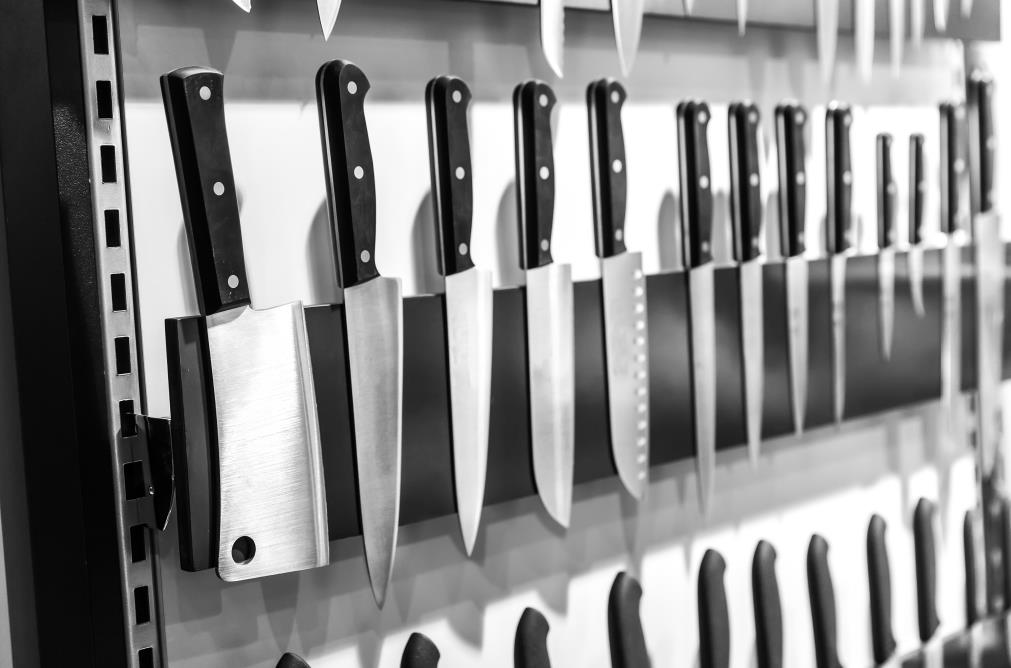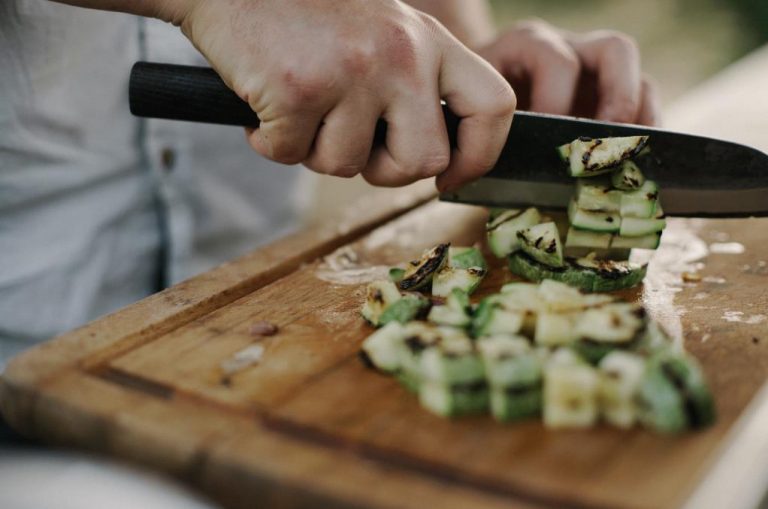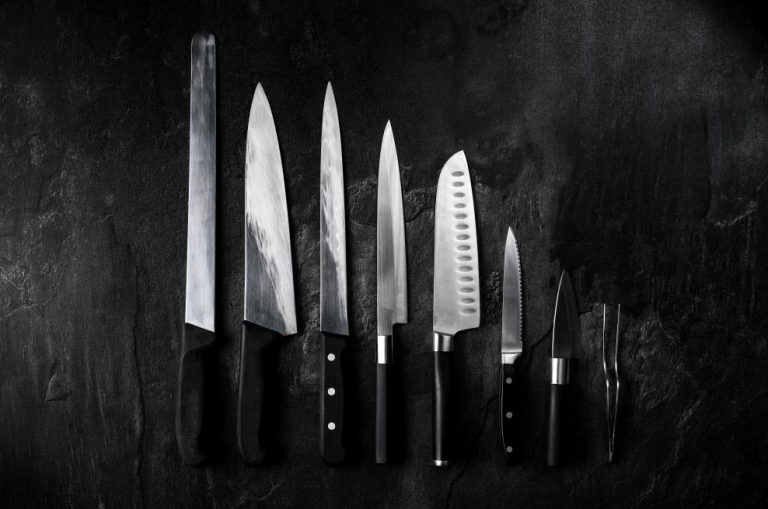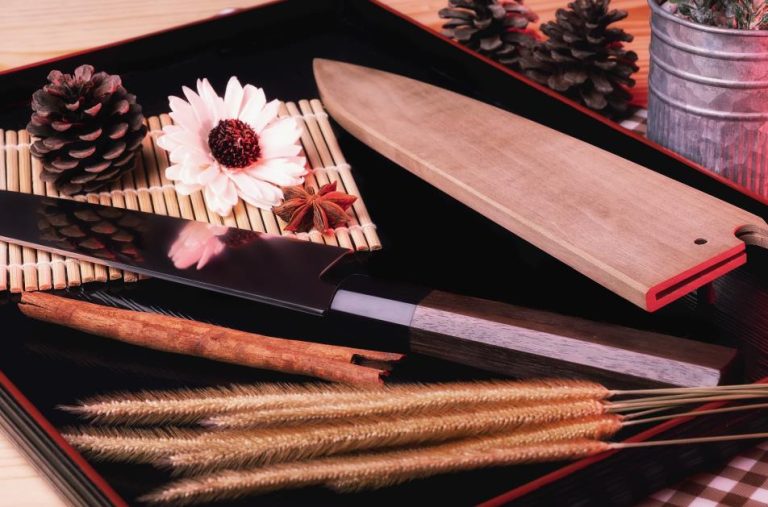Chefs looking for their forever tool might usually ask themselves what’s the best choice out of so many available options.
The “all-purpose” label makes it difficult to understand each knife’s strengths and weaknesses, so customers from the kitchen niche are often left with questions.
As a seller, your number one priority is offering solutions. You’re not only selling products, but you’re selling an enhanced experience to kitchen enthusiasts.
And to sell solutions, you should first do your due diligence and educate yourself. That way, you can give your audience the tools they need without ever knowing they need them.
Luckily, we’ve compiled everything you need to know in the article below.
Let’s cut to the chase.
What is an all-purpose kitchen knife?
As with most naming conventions, “all-purpose” doesn’t necessarily mean all-purpose. For a knife to be part of this category, it doesn’t have to excel at preparing everything, from the most delicate cuts of fish to the toughest cuts of beef.
When we refer to an all-purpose knife, we generally mean a tool that can be kept somewhat glued to a chef’s hand while preparing their usual dishes.
For a sushi chef, an all-purpose knife will mean something else than for a vegetarian chef.
Below is a list of some of the most common all-purpose knives, along with their use cases.
Kiritsuke
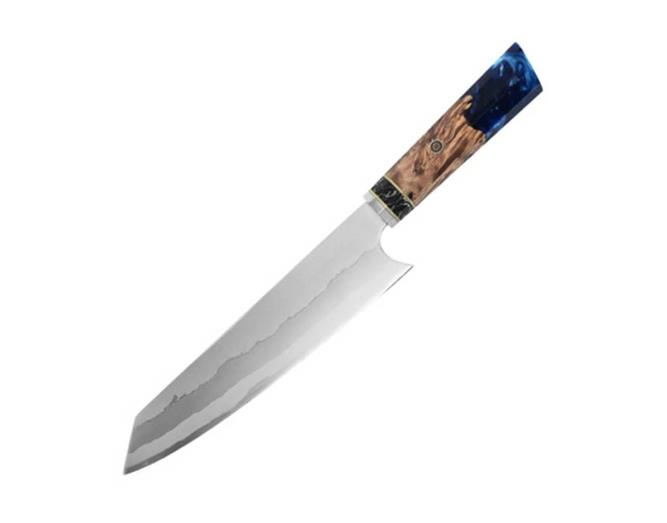
In literal translation, “Kiritsuke” means “to slit open,” which refers to a long blade with a sharp, reverse tanto point. This type of knife is widely used in Japanese cuisine, and it was traditionally reserved for executive chefs.
A Kiritsuke blade can be used as a Yanagiba for slicing fish and other seafood into extremely thin slices, as well as an Usuba for fine chopping and dicing vegetables and herbs.
Although it is an excellent all-rounder, its flat profile makes it different from a Gyuto or a Chef’s Knife.
Handling this type of knife requires a lot of practice, and it doesn’t lend itself well to varying kitchen tasks. Instead, it is more often used for precision cutting and elevating certain dishes’ visual appeal.
If you’re looking to serve plenty of fine cuisine chefs in your store, you can start looking for quality options in our Kiritsuke catalog.
Gyuto
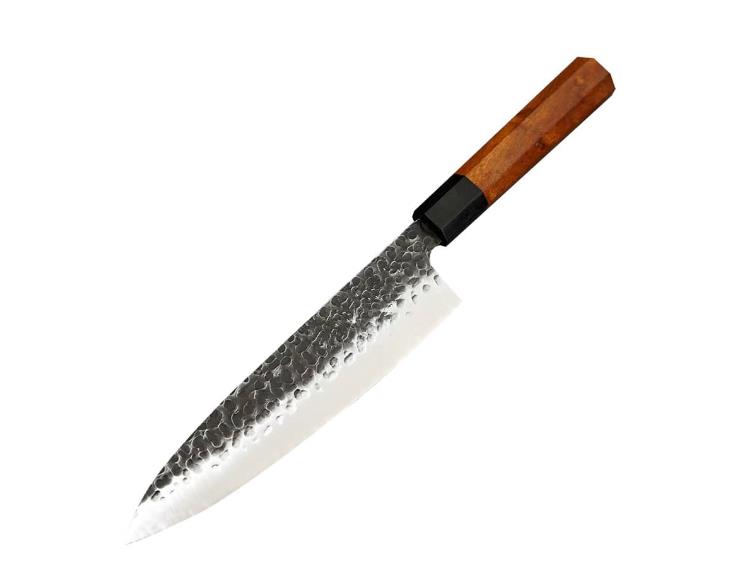
At its origin, the Gyuto knife was conceived for cutting large pieces of beef; hence their name – “gyuto” translates to “cow sword.” You’ll often see this knife being offered as the Japanese alternative to the Western Chef’s knife.
Their blades are quite long, with the edge meeting the spine at a sharp point, which offers a bigger cutting belly. Their design allows for easy rock-chopping, especially through tougher foods.
For this reason, Gyutos are excellent choices for cutting all kinds of meat and larger vegetables. Its fine point will also lend itself well for smaller cuts, although we wouldn’t necessarily qualify it as a precision tool.
However, medium-length Gyutos are very effective at a wide range of kitchen tasks, which is why many consider them the true Japanese version of an all-purpose knife.
Why don’t you research this type of knife further in our Gyuto catalog?
Chef’s knife
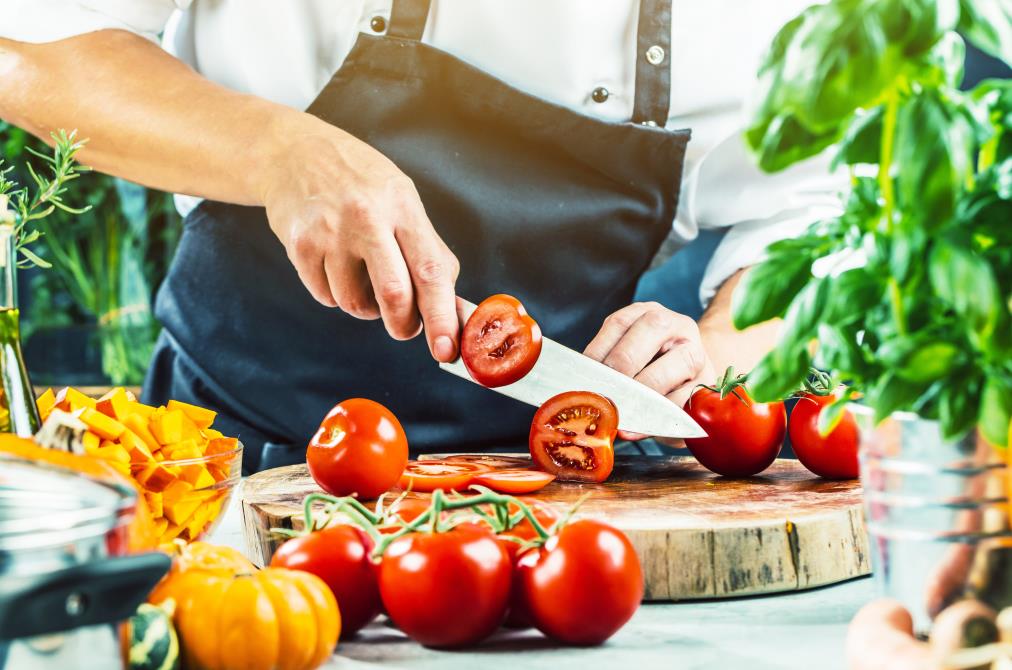
Figuring out how this one got its name shouldn’t be too hard. The Western Chef’s knife feature thick blades with edges that curve gradually into a sharp point.
Blending the weight of the blade with its design, you get a kitchen tool that’s effective for almost any task. A good chef’s knife makes it easy for a user to rock- chop and dice, debone, cut various types of meats or prepare hard, dense vegetables.
This same versatility makes the chef’s knife a must-have in any kitchen.
Santoku
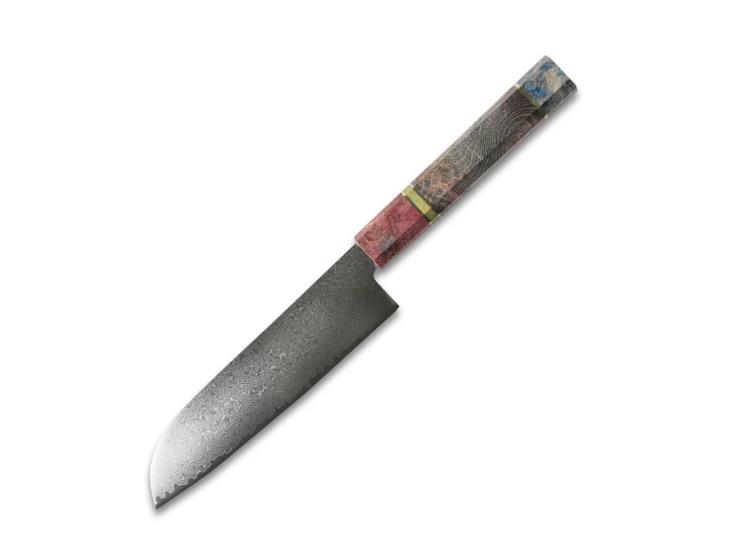
The full name of the ever-popular Santoku knife is “Santoku Bocho,” which translates to “three uses knife.”
The Santokus you’ll see commercialized today are modern versions of the traditional Japanese Nakiri with a rectangular blade.
Santokus kept the straight edge on their wide sheep’s foot blade. This offers the users a larger cutting area and allows them to put more pressure on the tip of the knife with minimal effort.
Although these knives are direct descendants of the vegetable knife, they’re equally useful and easy to handle when preparing meat, cheese, or nuts.
The wide blade makes scooping food from a cutting board effortless, making Santokus a favorite in households worldwide.
Moreover, they are smaller than your regular all-purpose knives, making them an excellent choice for people with small kitchen spaces. Not to mention, their design also allows for fine slices of vegetables or seafood.
This means that they’re not only great for mundane kitchen tasks, but they won’t require a cook to sacrifice the visual aspect of their dishes.
As always, various types of Santoku knives can be found in our catalog.
Buy Wholesale Knives and Start Scaling up with Us Today
Contact us and connect with a sales rep to get a free quote.
Kiritsuke vs. Gyuto vs. Chef’s Knife vs. Santoku

Although all of these knives can be employed for many tasks, it’s important to note some key differences between them.
Depending on the circumstances, they can all be used as your traditional chef’s knife, allowing the cook to perform most of their daily cutting, slicing, and dicing.
As always, the devil is in the details, and the minor differences between these knives make them suitable for different audiences.
Similarities
At a glance, the versatility of each knife gives them a place in the same category. Their designs don’t differ all that much, to the point where an experienced pair of eyes would find it difficult to set them apart.
Since they all perform well in preparing cuts of meat, veggies, and herbs, rookies could easily choose the wrong one for their particular needs.
And although the traditional chef’s knife has an easier learning curve than the Japanese styles, a chef should have some experience before unlocking each of their true power.
Culinary uses
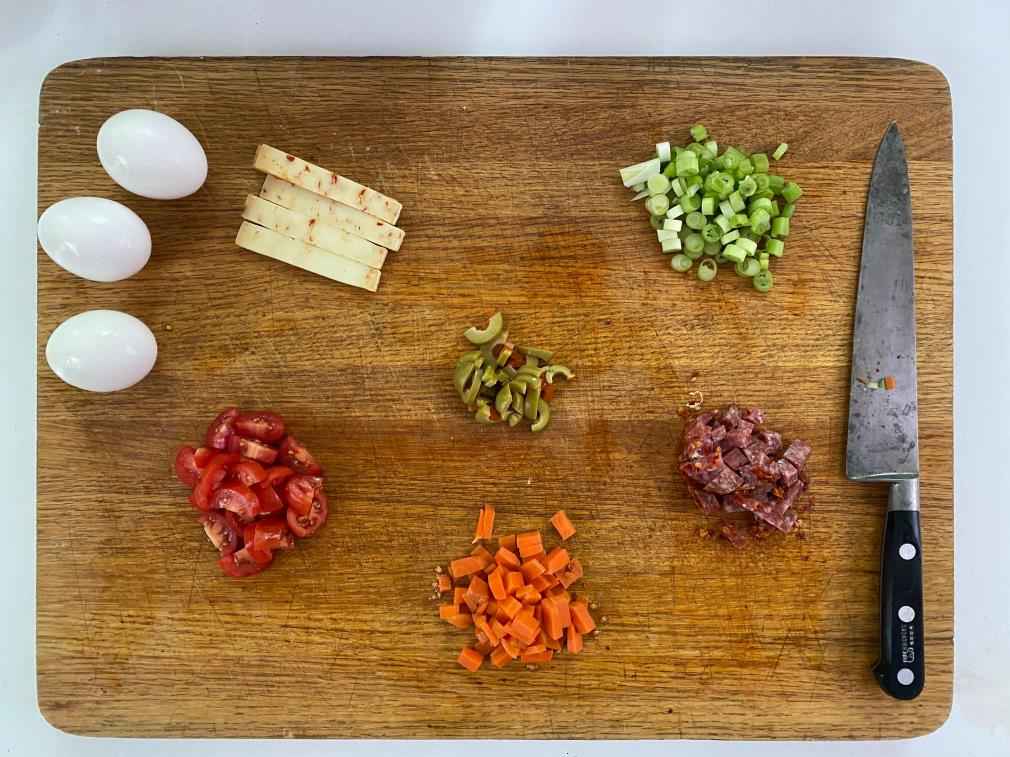
Using all of these knives to their total capacity depends on the chef’s experience, along with the frequency at which they prepare dishes from specific cuisines.
When dealing with a lot of fish or other seafood, a Kiritsuke knife might be the best choice. The long blade and the nimble reverse tanto clip make cutting very fine slices a breeze.
For this reason, the blade is preferred among people who cook traditional Japanese dishes. Its design makes it easy to prepare the ingredients for delicate, expensive-looking sushi and sashimi.
Moreover, when the visual factor is essential, the knife will allow chefs to create masterpieces from any dish, especially when they involve vegetables or poultry.
On the other hand, there are only minor differences between a Gyuto and a Western chef’s knife. They both lend themselves well to preparing a large variety of foods in many different ways.
These are excellent choices for most home cooks and even professional chefs who need to switch quickly between preparing different foods.
They both lack the expert precision of a Kiritsuke but make up for it by being easy to use for longer periods of time, preparing every type of food. Kiritsuke knives wouldn’t be the first choice for cutting larger, tougher meats or dense veggies due to their fragile blades.
However, beef and parsnips are the stages where Gyuto and chef’s knives can shine.
Lastly, Santokus were popularized recently by TV chefs and conquered many hearts with their unmatched utility. They are smaller than traditional Japanese styles, which makes them the perfect choice for people looking to save up some space.
Yet, you shouldn’t be fooled by their size. Santokus can do pretty much everything, from preparing meats of all kinds, vegetables, and herbs to decorating dishes.
Cutting methods
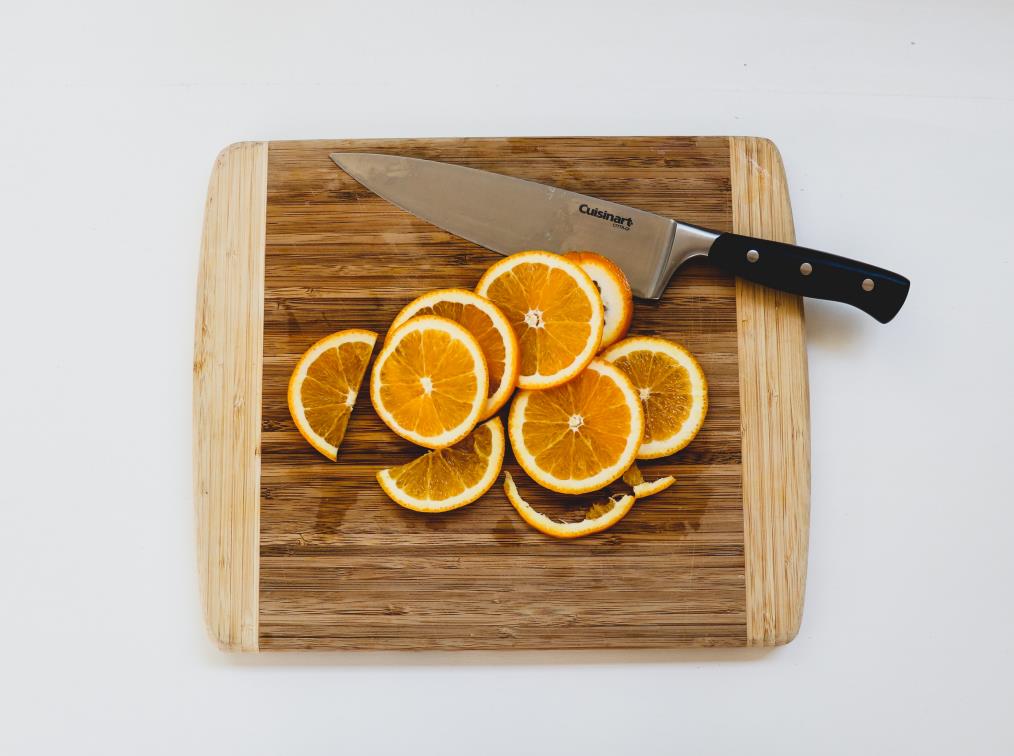
An experienced chef will need to use all of the most common cutting techniques in their craft. Generally, a good all-purpose knife will allow cutting, slicing, dicing, and chopping with ease.
When it comes to more advanced techniques, different knives serve different purposes.
For example, a Kiritsuke would be the perfect choice for Julienne or Chiffonade cuts, yet this is not to say that these cuts can’t be achieved with any other knife on this list.
| Knife Type | Suitable for cutting methods |
| Kiritsuke | long drawn slicing; chopping; mincing, dicing |
| Gyuto | chopping, rock chopping; cross chopping; slicing; dicing; |
| Chef’s Knife | slicing; back-slicing; chopping; rock-chopping; cross-chopping; dicing; mincing |
| Santoku | slicing; back-slicing; chopping; dicing; mincing |
Knife design
Kiritsuke
Kiritsuke blades evolved from a traditional Japanese blade, uniting the design of a Yanagiba, a blade used for fish and seafood, and an Usuba, a knife typically used for vegetables.
Their blade is rectangular, featuring a long, flat edge, which ends in a sharp, reverse tanto clip.
This means that the flat spine of the knife ends abruptly and angles down towards the edge, making the knife resemble a traditional Japanese sword.
The typical Kiritsuke blade features a single bevel edge, ending in a steel ring that holds a typically octagonal wooden handle.
Gyuto
Gyutos resemble the Western-style chef’s knife, with a few key differences. Their edge is slightly curved throughout the cutting belly, with a steeper angle as it gets closer to the tip. The spine curves down quite abruptly to meet the edge around the middle of the blade.
The handle is longer and a bit sturdier, balancing out the heavier blade that’s so useful for tougher foods. Similarly to Western knives, Gyutos have a double beveled edge, although their blade is a bit thinner and features a taller heel.
Chef’s Knife
The Western chef’s knife features a long blade with a flat spine. The edge has a slightly curved profile, angling up to meet the spine at a very sharp point. Its blade is thicker and heavier than you’ll see on many Japanese-style knives, perfectly balanced by a long handle.
Its curved edge allows the chef to employ the most common cutting techniques with ease, while the weight balance deters tired hands after prolonged use.
Santoku
A Santoku has a wider, shorter blade than most other knives, and it has also evolved from the traditional Japanese Nakiri.
It kept the rectangular blade design, adding a slightly curved belly. The spine angles down towards the belly to create a larger cutting surface, yet the angle is often quite steep.
This allows the cook to put more pressure on the tip, making it easier to chop through dense foods.
Typically, these knives have little elongated indents across the blade. These make separating very fine slices of vegetables and fish easier since they won’t stick to the blade as much.
Buy Wholesale Knives and Start Scaling up with Us Today
Contact us and connect with a sales rep to get a free quote.
Sizing
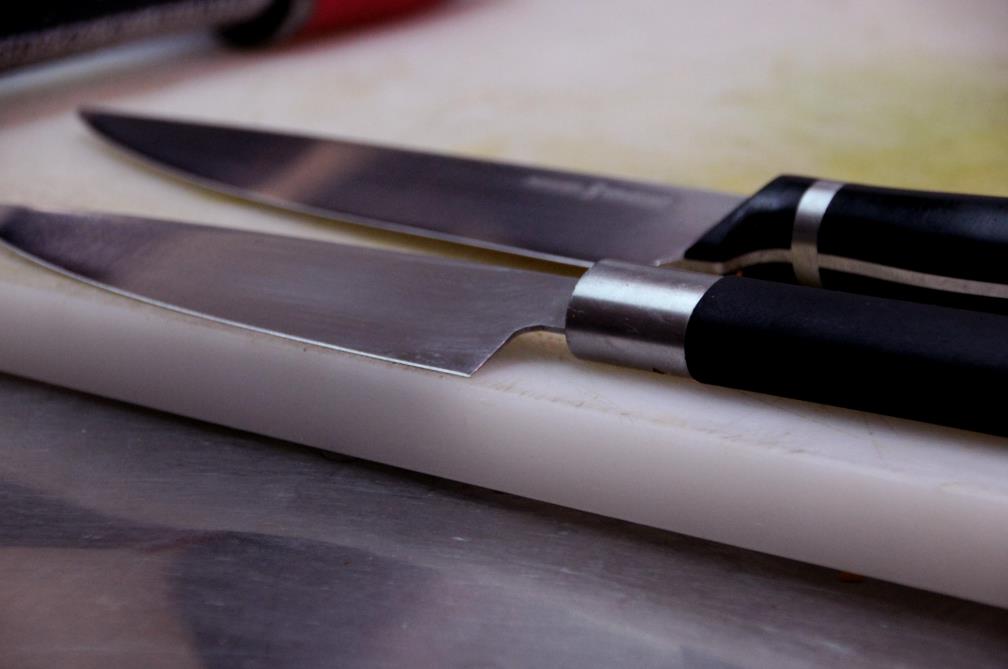
As with most Japanese knives, you can acquire these tools in varying lengths. The size you choose will have an impact on your buyers since these differences affect the effectiveness of the blade for certain conditions.
| Knife Type | Commonly sized | Most popular choice |
| Kiritsuke | 240-330 mm | 270 mm |
| Gyuto | 180-300 mm | 240 mm |
| Chef’s Knife | 152-305 mm | 200 mm |
| Santoku | 127-200 mm | 140 mm |
Which all-purpose knife should you be selling?
An all-purpose knife is a must-have for any store selling kitchen accessories. Deciding on only one option can be a daunting task, especially since not all all-purpose knives are made equal.
Depending on a customer’s level of cooking experience, culinary preferences, or just general shopping behavior, they might be looking for very specific stats on this basic tool.
If you’re still weighing your decision, a great point to start with is from the shoes of your regular customers.
What kind of buyers does your store attract? Are you catering to home cooks or seasoned professionals? Do your customers care more about utility or style? Are they careful shoppers, or will they rather buy on impulse?
When you’ve got that figured out, you should remember that scaling a bit isn’t a bad idea. If there aren’t plenty of executive chefs on your mailing list, don’t be afraid to add a Kiritsuke to your offer and see how it goes.
It’s likely that amateur chefs would like to test or practice their skills with it. And even kitchen newbies could present some interest in it due to its beautiful design and rich history.
| Knife Type | Ideal Customer |
| Kiritsuke | pro chefs, amateurs of Japanese cuisine, collectors |
| Gyuto | pro and amateur chefs, household cooks, vegetarians |
| Chef’s Knife | beginner cooks, people interested in a wide array of kitchen products |
| Santoku | novelty seekers, cooks with small kitchens, kitchen hobbyists |
Frequently Asked Questions
Wrap up
As you probably gathered, it’s difficult to state what makes an all-purpose knife. Some of the most important factors are that the tool fits a chef’s daily needs, is easy to use for a prolonged time, and allows them to create their go-to dishes with little fuss.
People looking for a great all-rounder might find their perfect choice to be any one of these popular types of blades. The importance of carrying various all-purpose knives cannot be overstated if you want your store to become the first place people turn to.
Luckily, you don’t need a list of distinct suppliers or a considerable budget to include all of these in your store. If you’re looking to enrich your collection, you’ll be happy to know we produce all of these tools, and we’re ready to take care of the entire process for you. Becoming a reliable all-purpose knife seller is as easy as having a chat with us. We’ll take care of everything else.
